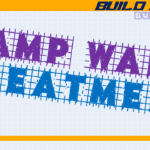Project closeout is the final, crucial phase of any construction project. It ensures that all aspects of the project are completed to the client’s satisfaction and that all contractual obligations are fulfilled. As an experienced construction professional, I’ve learned that a well-managed closeout can be the difference between a successful project and a problematic one.
During closeout, you address a myriad of tasks including finalizing documentation, resolving outstanding issues, and ensuring that all contractual requirements are met. This phase involves meticulous attention to detail and coordination among various stakeholders. From managing key documents like final as-built drawings and warranty certificates to overcoming common challenges such as incomplete punch lists and delays in final payments, every aspect of closeout must be handled with precision.
In this guide, we’ll explore the essential components of project closeout, share best practices for ensuring efficiency, and provide real-world examples of how leveraging technology and effective strategies can lead to successful project completion. By understanding and implementing these practices, you’ll be better equipped to navigate the closeout process smoothly, ensuring that your projects end on a positive note and meet or exceed client expectations.
Key Steps in Project Closeout Process
Navigating the project closeout process requires careful attention to detail and a structured approach. From finalizing documentation to ensuring client satisfaction, each step is crucial for a successful closeout. Drawing from my experience in construction management, here are the key steps to follow:
1. Complete Documentation
Ensure all project documentation is finalized and organized. This includes:
- Final As-Built Drawings: Reflect the completed project as built, showing any changes made during construction.
- Operation and Maintenance Manuals: Provide detailed instructions on the operation and upkeep of installed systems and equipment.
- Warranty Certificates: Offer documentation of warranties for materials and workmanship.
- Inspection Reports: Include final inspection reports to verify that all work meets required standards.
Thorough documentation helps prevent disputes and ensures that the client has all necessary information for ongoing maintenance.
2. Resolve Punch List Items
Address all punch list items before the final inspection. These are typically minor tasks or corrections that need attention. To manage this step:
- Create a Detailed Punch List: Include all items that need resolution.
- Assign Responsibilities: Ensure that each item is assigned to the appropriate team member or subcontractor.
- Track Completion: Regularly update the list and verify completion of each item.
Resolving punch list items ensures that the project meets all contractual requirements and client expectations.
3. Conduct Final Inspections
Perform final inspections to confirm that all work is completed to the required standards. Include:
- Final Site Walk-Through: Check the overall condition of the project site.
- Verification of Compliance: Ensure that all work complies with contractual and regulatory standards.
Final inspections help identify any issues that need to be addressed before project handover.
4. Prepare Handover Documentation
Prepare and organize all documents required for the handover process. This includes:
- Handover Package: Compile all relevant documents into a comprehensive handover package.
- Client Training Materials: Provide training materials for the client on the operation of systems and equipment.
- Final Acceptance Forms: Include forms for the client’s final approval and acceptance of the completed project.
A well-organized handover package facilitates a smooth transition and ensures that the client is well-informed.
5. Process Final Payments
Ensure all financial aspects of the project are resolved before closing out. This involves:
- Submit Final Payment Applications: Ensure all payment applications are submitted and processed.
- Obtain Lien Waivers: Provide lien waivers to confirm that all subcontractors and suppliers have been paid.
- Release Retainage: Ensure any retained funds are released upon project completion.
Processing final payments efficiently helps avoid delays and ensures all financial obligations are met.
6. Archive Project Records
Finally, archive all project records for future reference. This includes:
- Project Files: Store all documentation and records related to the project.
- Digital Records: Ensure that all digital files are backed up and accessible.
Archiving project records provides a valuable reference for future projects and facilitates easy retrieval of information.
By following these key steps, you can manage the project closeout process effectively, ensuring a successful completion and a satisfied client.
Key Components of Project Closeout
Effective project closeout is crucial for ensuring a smooth transition from construction to operation. As a construction manager, you must focus on several key components to achieve a successful closeout. These components not only ensure that all project aspects are finalized but also lay the groundwork for future projects.
1. Documentation Review
Documentation is the backbone of any project closeout. Ensure all essential documents are complete, accurate, and organized. This process involves reviewing contracts, change orders, as-built drawings, permits, and warranties. It’s vital to include the following documents:
- Final As-Built Drawings
- Operation and Maintenance Manuals
- Warranty Information
- Inspection Reports
- Punch List Completion
- Project Closeout Checklist
- Final Payment Applications
Thorough documentation review prevents future disputes and makes the handover process smoother.
2. Final Inspections
Conducting thorough final inspections is a must for project closeout. These inspections confirm that all work aligns with the project specifications and that any remaining tasks are completed. You should address all items on the punch list before moving forward. This step ensures that the client is satisfied with the project’s completion and that there are no lingering issues.
3. Handover Procedures
The handover is a critical component of the project closeout process. It involves transferring all relevant project information and materials to the client. This includes operation manuals, maintenance guides, warranties, and training sessions for facility management teams. A well-organized handover ensures that the client can operate and maintain the facility efficiently after the project’s completion.
By focusing on these key components—documentation review, final inspections, and handover procedures—you can ensure a successful project closeout. This not only satisfies clients but also strengthens your reputation for future projects.
Best Practices for an Efficient Closeout Process
An efficient closeout process is essential for every construction project. As a seasoned construction professional, I’ve learned that careful planning and proactive management are key to ensuring a smooth project closeout. Here are some best practices to help you streamline this critical phase.
1. Plan Early and Prepare Thoroughly
Start planning your closeout process early, ideally from the project’s inception. Outline the key steps and deadlines in a closeout plan. Assign responsibilities to your team members to ensure nothing falls through the cracks. Essential documents to prepare in advance include:
- Closeout Plan
- Final As-Built Drawings
- Operation and Maintenance Manuals
- Warranty Documents
- Final Payment Applications
- Project Completion Reports
Early preparation helps you avoid last-minute rushes and ensures all project requirements are met.
2. Maintain Clear Communication with Stakeholders
Throughout the project, maintain open lines of communication with all stakeholders, including the client, subcontractors, and your team. Regularly update them on the progress of the closeout process. Clearly communicate expectations and address any concerns promptly. This proactive approach helps manage expectations and reduces the risk of disputes.
3. Conduct Quality Assurance Reviews
Quality assurance is a crucial part of the closeout process. Ensure that all work meets the project specifications before final inspections. Conduct regular reviews and address any issues immediately. Essential quality assurance documents include:
- Inspection Reports
- Punch List Completion
- Quality Control Checklists
- Test and Commissioning Reports
By ensuring quality throughout the project, you can confidently approach the final stages with fewer issues to resolve.
4. Use Technology to Streamline the Process
Leverage project management software and digital tools to track progress and manage closeout tasks. These tools help you stay organized and ensure that all tasks are completed on time. Digital document management systems are particularly useful for handling and sharing essential documents, such as:
- Digital Closeout Checklists
- Online Document Repositories
- Digital Inspection Reports
- Electronic Signatures for Final Approvals
Technology not only improves efficiency but also reduces the risk of errors during the closeout process.
5. Finalize and Organize All Documentation
As you approach the closeout, make sure all documentation is finalized and well-organized. This includes compiling and reviewing all project documents, such as:
- Final As-Built Drawings
- Operation and Maintenance Manuals
- Warranty Information
- Final Payment Applications
- Project Closeout Checklist
Ensure that all documents are signed, sealed, and delivered to the client as part of the handover process. Well-organized documentation is essential for a successful project closeout.
By following these best practices, you can ensure a smooth and efficient closeout process. This not only wraps up the project successfully but also strengthens your relationship with the client, paving the way for future opportunities.

Common Challenges in Project Closeout
Project closeout can be a complex phase, often presenting challenges that can delay final completion. As an experienced construction professional, I’ve encountered and addressed many of these issues. Here are the common challenges you might face during project closeout and how to overcome them.
1. Incomplete Documentation
One of the most common challenges is incomplete or missing documentation. Essential documents such as as-built drawings, operation manuals, and warranty certificates must be finalized and handed over. Missing documents can cause significant delays and disputes. Key documents to ensure are complete include:
- Final As-Built Drawings
- Operation and Maintenance Manuals
- Warranty Certificates
- Inspection Reports
- Final Payment Applications
Regularly update your documentation throughout the project to avoid last-minute gaps.
2. Unresolved Punch List Items
Punch list items that are not resolved promptly can lead to extended project timelines. These items often include minor repairs, adjustments, or unfinished tasks that need attention. Ensure that all punch list tasks are addressed well before the final inspection. Maintaining a detailed punch list throughout the project helps you track and resolve issues efficiently.
3. Client Satisfaction and Handover Issues
Ensuring client satisfaction during the handover process is crucial. Miscommunication or unmet expectations can lead to disputes or delays in final acceptance. It’s essential to keep the client informed and involved during the closeout phase. Providing a well-organized handover package, including all final documents and training materials, helps ensure a smooth transition.
- Handover Package Checklist
- Client Training Schedules
- Final Acceptance Forms
Addressing the client’s concerns promptly and professionally ensures a positive end to the project.
4. Delays in Final Payments
Final payments often hinge on the successful completion of the closeout process. Delays in submitting necessary documents or resolving punch list items can stall final payments. To avoid this, ensure all financial documents, such as final payment applications and lien waivers, are ready and submitted promptly.
- Final Payment Applications
- Lien Waivers
- Release of Retainage Forms
Proactively managing these financial aspects helps secure timely payments and project closure.
5. Coordination with Subcontractors
Coordinating with subcontractors during closeout can be challenging, especially when multiple trades are involved. Delays in their final work or documentation can impact the overall project closeout. Maintain clear communication with all subcontractors and ensure they understand the closeout requirements and deadlines.
- Subcontractor Closeout Checklists
- Final Inspection Reports
- Subcontractor Payment Applications
Effective coordination with subcontractors ensures that all tasks are completed on time, keeping the project on track.
By anticipating and addressing these common challenges, you can navigate the project closeout phase more effectively. This approach not only ensures a smooth and timely closeout but also enhances your reputation as a construction professional who delivers results.
Leveraging Technology for Project Closeout
Leveraging technology can significantly streamline the project closeout process, making it more efficient and less prone to errors. As a seasoned construction professional, I’ve seen firsthand how the right tools can transform a complex closeout into a smooth operation. Here’s how you can effectively use technology during the closeout phase.
1. Digital Documentation and Management
Managing and finalizing documents can be time-consuming, but digital tools simplify this process. Use document management systems to store and organize all closeout documents, such as:
- Final As-Built Drawings
- Operation and Maintenance Manuals
- Warranty Certificates
- Final Payment Applications
- Inspection Reports
These systems allow for easy access, sharing, and updates, ensuring all stakeholders have the latest information.
2. Automated Closeout Checklists
Automated checklists help you track tasks and ensure nothing is overlooked. These tools allow you to monitor progress, assign responsibilities, and receive notifications when tasks are completed. Essential checklists to manage digitally include:
- Project Closeout Checklist
- Punch List Items
- Subcontractor Closeout Checklists
- Handover Package Checklist
Automation reduces manual tracking and helps you maintain control over the entire closeout process.
3. Cloud-Based Collaboration Tools
Cloud-based tools facilitate real-time collaboration among project teams, clients, and subcontractors. These platforms enable everyone to access and update documents, communicate changes, and resolve issues quickly. Key documents to manage collaboratively include:
- Digital Inspection Reports
- Client Approval Forms
- Final Contract Modifications
- Subcontractor Documentation
Using cloud technology ensures that all parties are aligned and that the closeout process moves forward without delays.
4. Mobile Apps for On-Site Management
Mobile apps allow you to manage closeout tasks directly from the field, providing instant access to project information and documentation. Use these apps to conduct inspections, complete checklists, and communicate with your team on-site. Documents that can be managed via mobile apps include:
- Punch List Completion Reports
- Site Inspection Reports
- Final Work Approvals
- Photo Documentation
Mobile technology keeps you connected and responsive, ensuring that tasks are completed efficiently, even when you’re on the go.
5. E-Signatures for Faster Approvals
Obtaining signatures can delay the closeout process, especially when dealing with multiple stakeholders. E-signature tools streamline this step by allowing all parties to sign documents electronically, saving time and reducing paperwork. Documents that benefit from e-signatures include:
- Final Acceptance Forms
- Warranty Agreements
- Release of Retainage Forms
- Subcontractor Payment Applications
E-signatures ensure that approvals are obtained quickly, keeping the closeout process on schedule.
By leveraging technology, you can make the project closeout phase more efficient and less stressful. These tools not only improve the accuracy and speed of your closeout tasks but also enhance communication and collaboration, ensuring a successful project handover every time.
Case Studies and Examples
Examining real-world case studies can provide valuable insights into the project closeout process. As an experienced construction professional, I’ve seen how different approaches to closeout can lead to varying outcomes. Here are a few examples that highlight the importance of thorough project closeout.
Case Study 1: Large Commercial Development
In a large commercial development project, the closeout process was meticulously planned using digital tools. The project team implemented a document management system to track and store all essential documents, including:
- As-Built Drawings
- Operation and Maintenance Manuals
- Warranty Certificates
- Final Payment Applications
- Inspection Reports
This system allowed the team to quickly access and update documents, leading to a smooth handover to the client. The use of e-signature technology expedited the approval of final documents, reducing delays and ensuring the project was completed on time.
Case Study 2: Residential Complex Construction
A residential complex construction project faced significant delays during closeout due to incomplete punch list items and poor communication with subcontractors. To address these challenges, the project manager introduced a cloud-based collaboration tool. This platform enabled real-time updates and better coordination among the team, leading to the resolution of:
- Punch List Items
- Final Inspection Reports
- Subcontractor Closeout Documents
By integrating mobile apps for on-site management, the team could quickly address any remaining issues, ultimately bringing the project to a successful close.
Case Study 3: Industrial Facility Expansion
An industrial facility expansion project highlighted the importance of client involvement during the closeout phase. Initially, there were misunderstandings about the scope of final work, which led to client dissatisfaction. The project team responded by organizing regular meetings with the client and providing comprehensive handover packages, including:
- Final As-Built Documentation
- Operation and Maintenance Manuals
- Client Training Schedules
- Warranty Agreements
This proactive approach, combined with the use of digital tools for managing and sharing documents, ensured the client was fully satisfied with the final product. The project closed on time and with a strong client relationship intact.
Case Study 4: Infrastructure Upgrade
In an infrastructure upgrade project, the closeout process benefited greatly from automated checklists. The project involved multiple subcontractors and complex coordination, making it difficult to keep track of all tasks. The use of automated closeout checklists helped the project manager maintain control over:
- Subcontractor Closeout Checklists
- Final Contract Modifications
- Site Inspection Reports
These checklists ensured that nothing was overlooked, allowing the project to close without any major issues.
By studying these examples, you can see how different strategies and tools can impact the success of a project closeout. The key is to adapt these lessons to your own projects, using the right technology and maintaining clear communication with all stakeholders. With careful planning and execution, you can achieve a smooth and efficient closeout process every time.
Conclusion
Effective project closeout is crucial to ensuring that a construction project wraps up smoothly and meets all client expectations. By addressing common challenges, leveraging technology, and adhering to best practices, you can significantly enhance the efficiency and success of your closeout process.
Summary of Key Points
- Key Components of Closeout: Proper documentation, including final as-built drawings, operation and maintenance manuals, and warranty certificates, is essential for a successful closeout.
- Best Practices: Early planning, clear communication, and leveraging technology such as digital management systems and e-signature tools help streamline the closeout process and reduce potential delays.
- Common Challenges: Addressing incomplete documentation, unresolved punch list items, and coordination issues with subcontractors is vital to avoiding setbacks during the closeout phase.
- Leveraging Technology: Digital tools and cloud-based systems facilitate document management, automate checklists, and enable real-time collaboration, making the closeout process more efficient.
- Case Studies: Real-world examples demonstrate how strategic planning and technology can overcome common challenges and lead to successful project closeout.
Final Recommendations for Construction Managers
To ensure a smooth project closeout, implement these final recommendations:
- Plan Early: Develop a closeout plan from the beginning of the project to avoid last-minute issues.
- Communicate Effectively: Keep all stakeholders informed and involved throughout the closeout process.
- Utilize Technology: Use digital tools to manage documents, track tasks, and facilitate communication.
- Review Thoroughly: Regularly check all documentation and address any discrepancies before the final handover.
By applying these strategies and learning from successful case studies, you can handle the closeout phase with confidence and efficiency. A well-executed closeout not only completes the project but also strengthens client relationships and enhances your reputation as a construction professional.








Leave a Reply